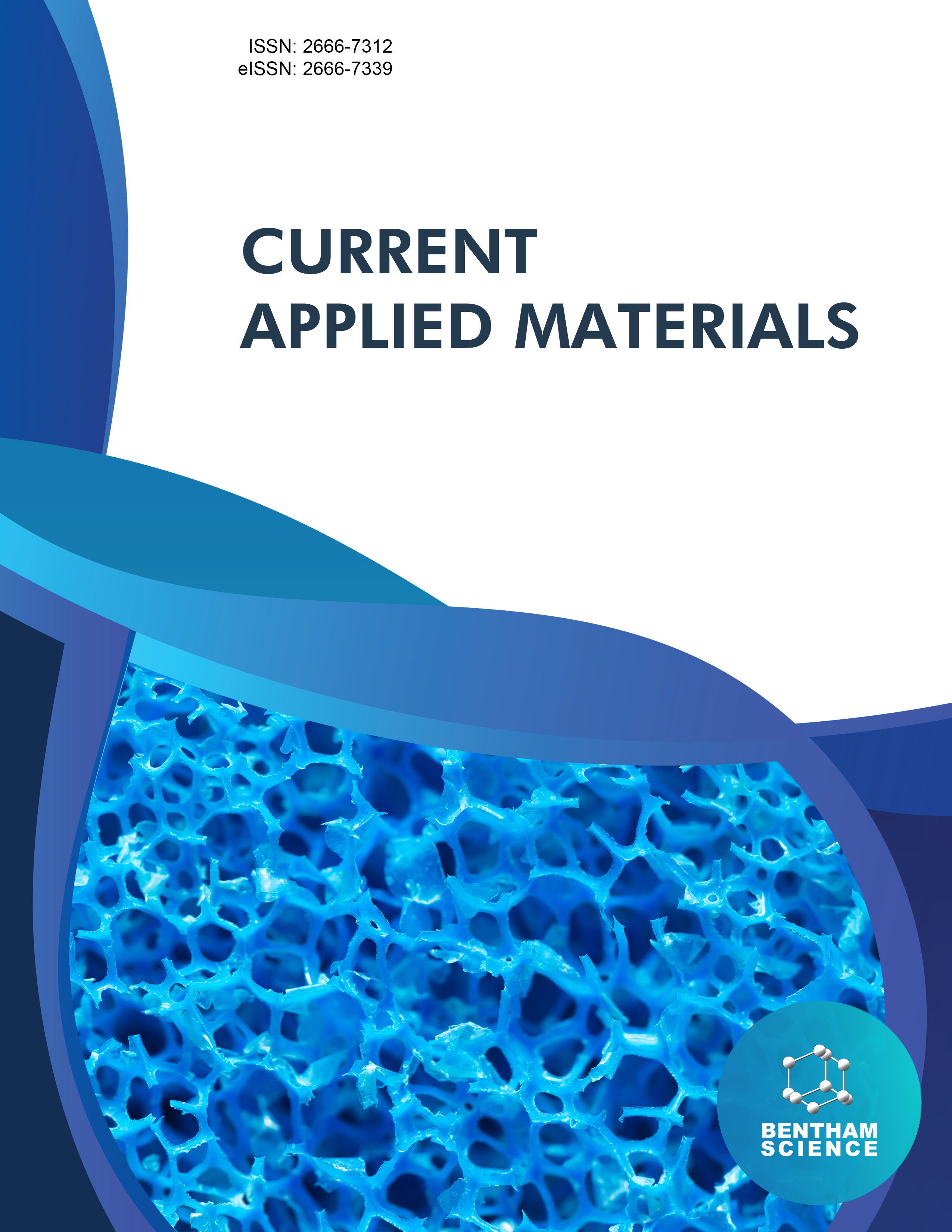- Home
- A-Z Publications
- Current Applied Materials
- Previous Issues
- Volume 2, Issue 1, 2023
Current Applied Materials - Volume 2, Issue 1, 2023
Volume 2, Issue 1, 2023
-
-
Electromotive Force of Spontaneously Polarized Semiconductors
More LessBackground: Spontaneously polarized finely dispersed semiconductors can be sources of direct electric current, similar to thermoelectric converters. Their power is low due to the low electrical conductivity of the powders.Objective: Theoretical description of the electromotive force of a spontaneously polarized homogeneous semiconductor film with ionized donor centers uniformly distributed over its two surfaces and f Read More
-
-
-
A Critical Appraisal of Functional Hydrogels for Chronic Wound Healing: Recent Advances and Ongoing Research
More LessAuthors: Tanmay S. Markandeywar, Dilpreet Singh and Raj Kumar NarangIn diabetic wounds, reactive oxygen species (ROS) are developed in large quantities in a consistently hyperglycemic and excessive biogenic environment. Inflammatory factors are increased as a result of impaired hematopoiesis. Because, subsequent infections obstruct the healing process and as a result, most chronic wounds are not healed properly. The majority of chronic diabetic wounds are worsened during the Read More
-
-
-
Recent Advances in the Impact of Antibiotic and Antioxidant Multifunctional Hydrogel on Diabetic Wounds Healing
More LessAuthors: Harish Bhardwaj, Renjil Joshi, Sulekha Khute and Rajendra Kumar JangdeHyperglycemia is a metabolic illness characterized by diabetes mellitus. Chronic hyperglycemia can lead to infection, production of more reactive oxygen species, chronic inflammation, and impaired angiogenesis, thus increasing the wound’s healing time. As the diabetic wound healing process is a more complex pathology, the demand to develop a topical application has emerged. This review focuses on the diabetic wound, wo Read More
-
-
-
Formation of Calcium Phosphate Apatite in System CaO-P2O5-H2O: Equilibrium at 298 K Under a Nitrogen Atmosphere
More LessAuthors: Marina V. Chaikina and Natalia V. BulinaAims: The formation of calcium phosphate apatite (hydroxyapatite, carbonate-containing hydroxyapatite, fluorapatite and carbonate-containing fluorapatite) in aqueous systems has been studied for over a century.Background: However, in the region of low concentrations of liquid phases, the question of the nature, composition and region of existence of apatite compounds remains controversial.Objective: The results of st Read More
-
Volumes & issues
Most Read This Month
Article
content/journals/cam
Journal
10
5
false
en


